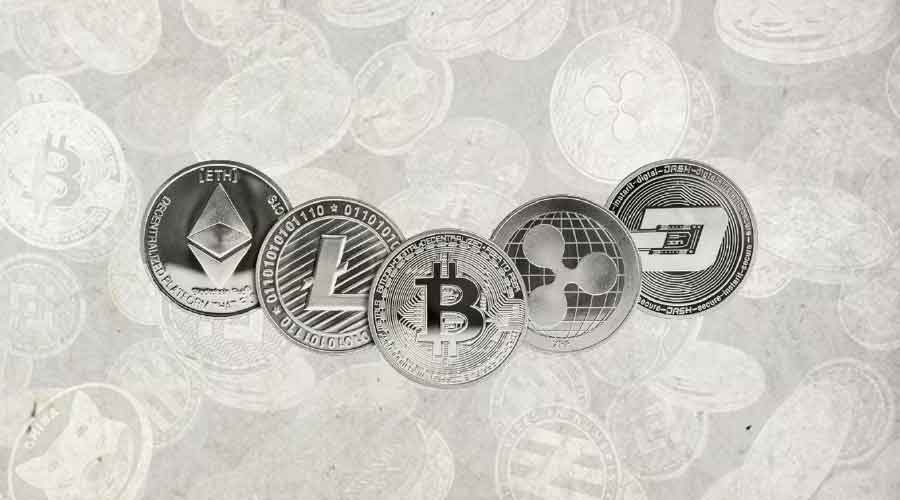 As the cryptocurrency space develops further, new virtual currencies, or “altcoins,” are becoming more and more well-known.
As the cryptocurrency space develops further, new virtual currencies, or “altcoins,” are becoming more and more well-known.
WHAT ARE ALTCOINS?
As alternatives to Bitcoin, or altcoins, arose to try and solve some of the perceived shortcomings of the original cryptocurrency. These digital assets are constructed on several blockchain systems with differing features and functionalities, but they function according to concepts comparable to those of Bitcoin. With the goal of offering distinctive value propositions to the cryptocurrency industry, hundreds of altcoins have been developed since the launch of the first altcoin, Namecoin (NMC), in 2011.
HOW DO THEY DIFFER FROM BITCOIN ?
Altcoins set themselves apart from Bitcoin in a few ways:
- Age: The first altcoins emerged in 2011, although Bitcoin was introduced in 2009. There are still frequent releases of new cryptocurrencies.
- Risk vs. Return: Despite its volatility, Bitcoin leads the market and has seen significant growth in value. Although there is more space for development, altcoins carry some risk.
- Technological Advancements: Altcoins, which offer cheaper prices and quicker transaction times than Bitcoin, are often based on more sophisticated technology.
TYPES OF ALTCOINS
Altcoins are divided into a number of types and classifications, each with a distinct function and goal. These are a few of the most common kinds of altcoins:
By linking the price of stablecoins to a group of assets like fiat money, precious metals, or other cryptocurrencies, its value is intended to remain constant. The goal of these currencies is to lessen market volatility generally. Notable stablecoins are MakerDAO’s DAI, USD Coin (USDC), and Tether (USDT).
The process of mining is what gives mining-based cryptocurrencies their ability to validate transactions and increase their currency supply. Mathematical equations are solved by miners using powerful computers; the first miner to solve the equation validates a block of transactions and is rewarded with cryptocurrency. The most well-known cryptocurrency that is mined is called Bitcoin.
Staking is a technique these cryptocurrencies employ to confirm transactions and increase the quantity of coins in circulation. In exchange for pledging coins to be utilized in transaction processing, participants in staking get cryptocurrency incentives. Staking was initially introduced by Peercoin, and because it uses less energy than mining, it has since become more and more popular.
Voting rights for governance tokens allow holders to influence a project’s or network’s development. These tokens contribute to the decentralized structure of the cryptocurrency by enabling users to make and vote on ideas, preventing decisions from being decided by a single central authority.
BUYING ALTCOINS:
Purchasing cryptocurrencies may be a lucrative endeavor, but trading requires caution and a thorough knowledge of the hazards. When trading altcoins, take into account the following steps:
- Research: It’s important to do in-depth study on the project, its team, and its possible use cases before trading any altcoins. Making educated trading decisions can be facilitated by having a solid understanding of an altcoin’s fundamentals.
- Select a trustworthy platform: Users must have an account on a cryptocurrency platform in order to trade altcoins. They have to make sure the exchange is trustworthy, safe, and has the cryptocurrencies they want to trade. In the cryptocurrency world, a popular option is the Crypto.com App.
- Make a strategy for trading: Create a trading strategy that details your objectives, level of risk tolerance, and trading tactics. This might support users in maintaining their concentration and discipline on their goals.
- Apply risk management: To safeguard their trading funds, users should apply risk management strategies including position size and stop loss setting.
- Remain educated: Follow the news and happenings in the cryptocurrency space, since these may greatly affect the price of altcoins.
SOME NOTEWORTHY ALTCOINS:
There are dozens of altcoins accessible on the massive cryptocurrency market. Among the noteworthy instances are:
- Ethereum (ETH): Using smart contracts, Ethereum is a platform for creating decentralized programs (dapps), and it is now the second-largest cryptocurrency by market capitalization.
- Litecoin (LTC): Litecoin, which is seen by some as the “silver” to Bitcoin’s “gold,” was created with a higher maximum supply and better transaction speeds than Bitcoin.
- Chainlink (LINK): Chainlink is a decentralized oracle network that links off-chain information and services to smart contracts.
- Uniswap (UNI): Uniswap is a decentralized exchange (DEX) based on the Ethereum blockchain that enables token swaps through the usage of the Automated Market Maker (AMM) protocol.
- Star (XLM): Stellar is an open-source payment network that seeks to facilitate easy cross-border exchanges of various currencies.




